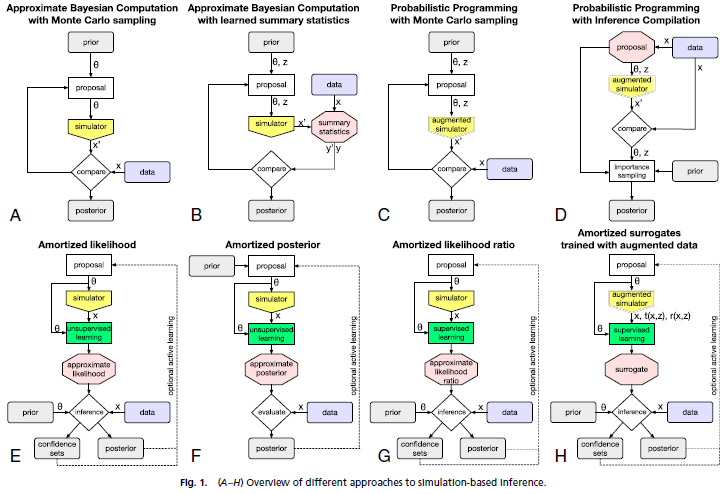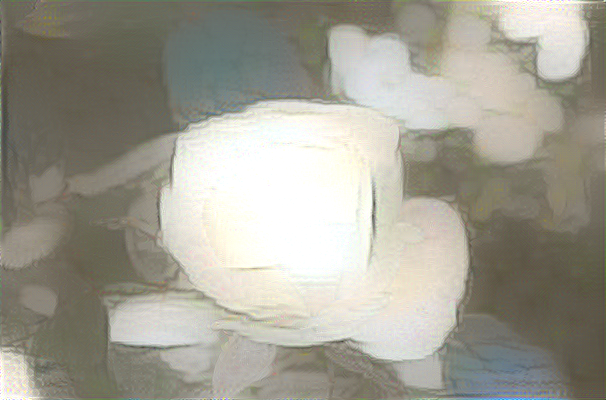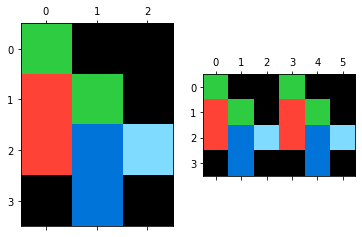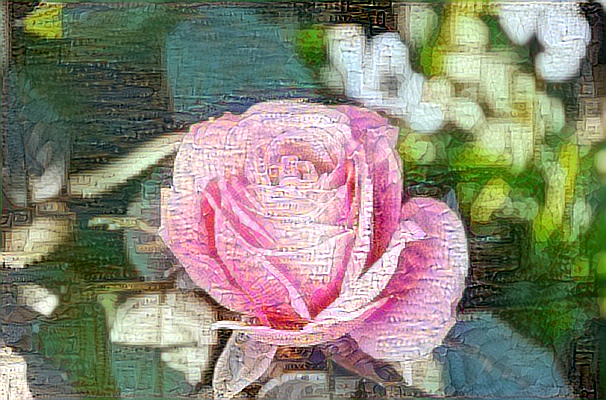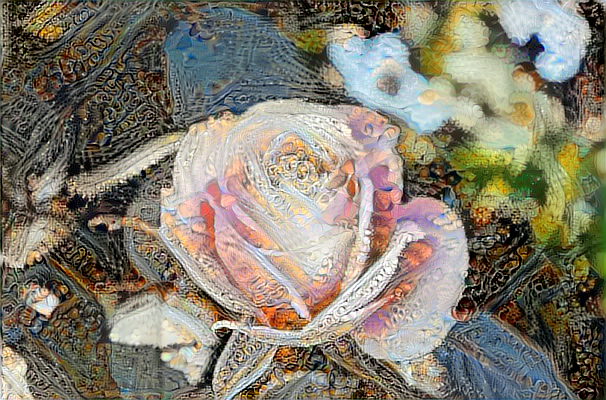W.パウリ 相対性理論 内山龍雄 訳 昭和49年10月28日 第1刷発行 講談社
本棚に眠っていた本を取り出してみた。
たぶん、読んで理解できるのは、序文とか、歴史的背景のような読み物のところだけだろうと思うが、今日1日、つまみ食いしてみよう。
W. Pauliが21才のときに、Mathematical Encyclopediaのために書かれた論文を、35年後に単行本として出版したもの。
その論文は、1921年までに発表された相対性理論に関するすべての文献の完全な総合報告を作ることがそのねらいだったとのこと。
本文は、原文ままだが、1955年までのその後の発展については、巻末に付録をつけ、本文の適当な箇所にこの付録を引用するための脚注もつけたとのこと。
以下に、英訳本に対するW. Pauliの序文の後半部分を、そのまま転載する。
相対性理論は”古典物理学”の終点であるという考えがある。ここにいう古典物理学とは時間空間のなかで因果律という”決定論”的形式により支配されたNeuton-Faraday-Maxwellのスタイルの物理学をさす。一方これにかわって量子力学的な新しいスタイルの自然法則が登場したといわれる。このような見かたは、私にいわせれば、部分的には正しい。しかしこの考えは、今日の物理学者の一般的な考えかたに対するEinsteinの偉大な影響を正しく、また十分に評価しているとはいえない。光の速さ(したがってまたすべての信号の速さ)が有限であるということから生ずる結果の認識論的分析により、特殊相対性理論は素朴な視覚表象から一歩抜きんでたものとなった。その昔、仮想的媒質とよばれた”光を伝えるエーテル”の運動の状態という概念は、単にそれらが観測にかからないという理由からだけでなく、数学的公式化にとって邪魔なものとなったために、放棄されねばならないことになった。すなわちエーテルは、相対性理論の基礎にある群論的性格にとって邪魔なものとなった。
一般相対性理論では変換群をさらに一般的なものに拡張することにより、慣性座標系という特別な概念もEinsteinにより排除された。なぜならこの概念は一般相対性理論の群論的性格と相いれないものであるからである。一般に理論を数学的に公式化するとき用いられる数学的量と、観測されたデータとのあいだの対応を概念的に分析するにしたがって、素朴な視覚表象を放棄するという上の例に述べたような一般的、批判的態度がなかったならば、現在のような形式の量子力学を創造することはできなかったであろう。相補性原理にしたがう量子力学では、作用量子が有限であるということにもとづく認識論的分析により、素朴な視覚表象からの脱皮がさらにおこなわれた。すなわち時間空間内における古典的場の概念、ならびに粒子(電子)の描く軌道という概念からの脱皮である。これらの概念は理論の合理的一般化のためには放棄されねばならなかった。電子の軌道が観測できないという理由だけからではなく、これらの概念は量子力学の数学的公式化の根底にある一般変換群に固有な対称性にとって邪魔になるから、両概念は排除されねばならなかった。
私は、基本的な科学上の発見が自己の道にそって、ときにはその発見者自身の反対にもさからって、如何にしてさらに新しい実りある発展を生むかということを示す最もよい例が相対性理論であると思う。
1956年11月18日、チューリッヒにて W. Pauli
第Ⅰ編 特殊相対性理論の基礎
§1.歴史的背景(ローレンツ、ポアンカレ、アインシュタイン)
相対性理論によって引きおこされた物理学的諸概念の変革には、実はそうなるまでに永い準備期間があった。すでに1887年、Voigt は弾性論的光学理論の立場から、運動している座標系においては局所的時間 t' を用いるほうが数学的に便利であることを指摘している。彼の論文では t' の原点は空間座標の一次関数であらわされる。しかし t' のスケールは静止座標系の時間 t のそれと同一としている。このようにして光の波動方程式は運動している座標系からみても、その形を変えないことが証明された。この Voigt の注意は、しかしながら、その後完全に忘れさられてしまった。
概要を記述する能力は無いので、適当に拾い読みする。
しかし Michelson の干渉計の実験(これは v/c の2次の量に関する実験である)の否定的結果は理論に対して致命的打撃を与えた。この問題を解決するために、ローレンツならびに、フィッツジェラルドもローレンツとは独立に次のような仮説を提唱した。すなわちすべての物体は速さvで並進運動をしているとき、その長さが収縮するという説である。長さの変化率は運動の方向に対してκ√1-(v/c)^2(正しく表示できない)倍に収縮する。
ローレンツが研究しのこした形式的な欠陥はポアンカレによってうめられた。ポアンカレは相対性原理が一般的にまた厳密になりたつものと主張した。彼はいままでの議論に登場した人々と同様に、マックスウェルの方程式は真空中では厳密になりたつものと仮定した。この仮定からすべての自然法則は”ローレンツ変換”に対して不変でなければならないという要請が導かれる。運動のさいに、運動方向に垂直な方向の大きさが不変であるということはつぎの要請から自然に導かれる。すなわち静止系から、これに対して一様な速度で運動している座標系への乗り移りを与える変換の全体が数学でいうひとつの群をなさねばならないという要請である。普通よく出あう座標系のズラシはこの群の部分群をなす。ポアンカレはさらに、電荷密度や電流に対するローレンツの間違った変換公式を訂正した。このようにして彼は電子論の場の方程式が完全な共変性をもつことを示した。
最後にこの新しい考えの基礎を正しく数式化して、この問題に終止符をうったのは、アインシュタインである。1905年の彼の論文はポアンカレの論文とほとんど同じ頃に、また1904年に発表されたローレンツの論文を知らないで書かれたものである。アインシュタインの論文は、ローレンツやポアンカレの論文に述べられていることの本質的部分をすべて包含しているばかりでなく、その体裁ははるかにエレガントで、包括的であり全問題の本質をより深く理解しているものといえよう。これから、このアインシュタインの研究の詳細について説明しよう。
§2.相対性の要請
物理的諸現象に対する地球の運動の影響を地球自身の上で何とかして測定しようとする多くの試みがすべて失敗したことはつぎのような主張が正しいことを証明するものであるといっても差しつかえなかろう。すなわち或る座標系を基準とした場合、そこに起るすべての現象はこの基準系全体の並進運動には無関係であるということである。
§3.光速度不変の要請、リッツの理論
相対性の要請だけでは、すべての自然法則がローレンツ変換に対して不変であるということを導くのにはまだ不十分である。たとえば古典力学の方程式(ニュートン力学の方程式)はローレンツ変換に対しては不変な形をしていないが、相対性の要請だけに着目するならば、これを完全に満たしている。すでに§1で述べたように、ローレンツとポアンカレはマックスウェルの方程式を彼らの議論の出発点に採用した。ところで自然法則の不変性といったような基本的法則は最も簡単な仮定から導かれるべきである。これを成しとげることに成功したのがアインシュタインである。彼はつぎのような電気力学の簡単な法則を原理として仮定する必要があることを示した:光の速さは光源の運動に無関係である。
§4.同時刻の相対性、ローレンツ変換の導出、ローレンツ変換の公理的性質
前節までに述べた二つの要請、すなわち相対性の要請と光速度不変の要請は一見両立しないもののように思われる。例えば、1人の観測者Aに対して光源Lが早さvをもって運動しているとしよう。また第2の観測者Bは光源Lに対して静止しているものとする。これら両観測者にとって光の波面はそれぞれ球面に見える。しかもその中心は、A, Bそれぞれにとって静止して見えるはずである。したがって、A, Bは実は異なる球面を見ていることになる。この矛盾はつぎのことを容認するならば解消する。すなわちAが見たとき、Aの球面上の各点には光が同時刻に到達するが、これをBから眺めれば、Aの球面上のすべての点に同一の時刻に光が到達したようには見えないということである。これは同時刻という概念が見る人によって異なるもので、相対的概念であることを主張するものである。そこでまず第一に、別々の場所に在る時計を同時刻にそろえるとはいかなる意味を指すものかを説明することが必要である。これについてアインシュタインはつぎのような定義を採用した。いま点Pから、Pの時計の示す時刻tpに光が放射され、それが点Qに到着し、そこで反射され、再びPに立ちもどったときのPの時計の示す時刻をtp'とする。Qで光が反射されたとき、Qに在る時計の示す時刻がtqであったとする。もしtq=(tp+tp')/2がなりたつときは、Qの時計はPの時計と同時刻に調整されているという。アインシュタインは時計の調整に光を用いた。なぜなら、二つの要請は光の信号がどのように伝播するかについて不明確さが一切ない明確な規定をわれわれに与えるから。時計を同時刻に調整するについては、勿論光以外の手段を用いる方法も考えられる。たとえば一つの時計を或る場所から他の地点にまで運搬する方法とか、また力学的あるいは弾性的な信号の伝達法も考えられよう。しかしどのような方法を用いるにしても、その結果が上述の光を用いた調整法による結果と矛盾してはならないということは重要な条件である。
§5.ローレンツ収縮と時間の遅れ
ローレンツ収縮は変換公式(Ⅰ)の結論のなかで最もかんたんなもののひとつである。したがってそれはまた二つの基本的要請の結果と言うことになる。
§6.速度の加法定理、光行差とエーテルの随伴係数、ドップラー効果
古典運動学における速度の加法の法則は、相対論的運動学ではもはや成りたたないことは容易にわかるであろう。相対性理論では c に v(<c) を加えれば c+v ではなく、再び c とならなければならない。
第Ⅱ編 数学的準備
§7.4次元世界(ミンコフスキー)
第Ⅰ編で示したことは、相対性の要請と光速度不変の要請は”すべての物理法則がローレンツ群に対して不変でなければならない”というひとつの要請にまとめられるということである。今後はローレンツ群というときは恒等式(Ⅱ)を満足するすべての一次変換の全体をさすものとする。この群に属する任意の変換は3次元空間座標軸の回転と(Ⅰ)のタイプの特別なローレンツ変換の組み合わせで作ることができる。数学的にいえば、特殊相対性理論とはローレンツ群に対する不変論にほかならない。
相対性理論にとってミンコフスキーの研究はきわめて重要な基本的な役割を演じた。彼はつぎの二つの事実に着目することによって、理論をきわめて見通しのよい形式に書きあらわした:
1.
§8.ローレンツ群の拡張
後に一般相対性理論を展開するときに必要となる数学的手段をこれから開発するために、ここで一般相対性理論の二、三の形式的結果を予め想定することにしよう。
§9.アフィン変換に対するテンソル解析
特殊相対性理論と一般相対性理論で、同じ公式をちがった形に書きあらわすことは不便であるから、これをさけるためにわれわれは最初からアフィン変換群を議論の基礎にとり、直交変換(つまりローレンツ群)に制限するようなことはしない。
§10.ベクトルの反変ならびに共変成分の幾何学的意味
§12.デュアル・テンソル.
§13.リーマン幾何学への移行
これからすべての点変換からなる群に対する不変論を議論することにしよう。そのためにはまず、長さの定義をしておかねばならない。また一般リーマン幾何学の定理を述べておく必要がある。Bolyai および Lobachevski の考えた古い幾何学では平行に関するユークリッドの公理は放棄された。しかし任意の幾何学的図形をそのまま、或る場所から他の場所まで自由に運搬することの可能性は公理としてみとめた。その結果、彼らの幾何学は曲率が一定の空間の或る特別な場合に相当する。また射影幾何学から出発しても、より一般的な計量をもつ空間には到達し得ない。もっとも一般的な計量をもつ空間の可能性を考えた最初の人はリーマンである。特殊相対性理論ならびに一般相対性理論では剛体という概念が修正されることになったが、それはいままで永い間、自明とされていた合同の公理が放棄されねばならないことが今日にいたって明らかとなったことを意味する。またそれは一般リーマン幾何学が空間・時間に対するわれわれの考察の基礎とならねばならないことを示すものである。
§14.ベクトルの平行移動の概念
§15.測地線
§16.空間の曲率
空間の曲率という概念を最初にいいだした人はリーマンである。彼は曲面のガウス曲率という概念をn次元多様体の場合へ拡張した。しかし彼のパリ受賞論文が発表されるまでは、この問題に対する彼の解析的方法がどのようなものかはわからなかった。この彼の論文には曲率に関する彼の扱いのすべてが載っている。それは消去法ならびに変分法のいずれをも用いる扱い方である。しかしリーマンのこの仕事より以前に、Christoffel および Lipschitz はすでに同じ結論を導いていた。
§17.リーマンの標準座標系とその応用
§19.4次元リーマン空間におけるガウスおよびストークスの積分定理
§20.測地成分を用いた共変微分
§21.アフィン・テンソルおよび自由ベクトル
一般相対性理論では、座標系の任意の変換に対して不変(共変)な形式をもつ方程式のみを扱うが、ときには、座標の一次変換(アフィン変換)に対してのみテンソルのように変換される或る種の量が重要となる場合がある。後者のようなふるまいをする量をアフィン・テンソルという。アフィン・テンソルの例として最もよく知られているものが測地成分 Γ (上付きi、下付きkl)である。
§22.現実の世界に対する条件
§23.無限小座標変換と変分原理
第Ⅲ編 特殊相対性理論
a)運動学
§24.ローレンツ変換の4次元的表現
§25.速度の合成則
§26.加速度の変換則、双曲線運動.
b) 電気力学
§27.電荷の不変性.4元電流密度
§28.電子論の基礎方程式の共変性
すでに§1でも述べたように、ガリレイ変換に対してマックスウェルの方程式が不変でないことが相対性理論を誕生させるひとつの大きな誘因となった。ローレンツは彼の1904年の論文において、現在われわれがローレンツ変換とよんでいる変換に対してマックスウェルの方程式が不変であることを証明した。しかしこの証明は電荷や電流が存在しない場合にかぎられていた。電荷、電流が存在する場合をも含めて方程式の不変性を完全に証明したのはポアンカレ(およびこれと独立にアインシュタイン)である。またマックスウェルの方程式を4次元テンソル形式に書きなおしたのはミンコフスキーである。彼は”面テンソル”の概念を重視した最初の人である。
さて電磁場の方程式を4次元的に不変な形式で書きくだすために、まず電荷密度、電流密度に関係しない4個の方程式をとりあげよう:
§29.電磁的力.電子の力学.
アインシュタインは彼の第1論文ですでにつぎのことを示した。すなわちもし電磁場内を無限に小さな速度をもって運動している点電荷の運動の法則がわかっているとき、相対性理論を用いれば、任意の大きさの速度をもって電磁場のなかを運動する点電荷の行動について明確な予言をすることが可能であるということである。
質量に対する(215)という形式は、特に電子の質量に対してローレンツによりはじめて与えられた。彼は、電子自身もその運動の結果、”ローレンツ収縮”をこうむるという仮定からこの結果をみちびいた。
§30.電磁場の運動量とエネルギー.微分型ならびに積分型保存則.
§31.電気力学における不変変分原理.
§32.応用例
§33.運動している物体に対するミンコフスキーの現象論的電気力学
§34.現象論的電磁気学の電子論的基礎づけ.
§35.現象論的電気力学におけるエネルギー・運動量テンソルならびに電磁気力.ジュール熱.
相対性原理によれば、静止している物体に対する(電磁的)エネルギー・運動量テンソルならびに電磁的力がわかっていれば、運動している物体に対するこれらの量を一意的に導くことができるはずである。それにもかかわらずエネルギー・運動量テンソルに対して、いろいろの人によりそれぞれ異なった形式が提唱されている。これらの種々の形式のうちでどれが正しいかは、いまのところまだ決着がついていない。そこでエネルギー・運動量テンソルの形式がどんなものであろうと、それの特別なえらびかたには無関係になりたつ相対性理論からの一般的結論についてまず考えてみよう。
エネルギー密度W、エネルギーの流れの密度(強さ)S、運動量密度g、および3次元的張力テンソルの成分T(添え字省略)は、真空の中の電気力学の場合と同様に、ひとつの4次元テンソルSikにまとめられる:
§36.理論の応用
c)力学および一般力学
§37.運動方程式.運動量と運動のエネルギー
ここで E=mc**2が登場する。(318b)
§38.相対論的力学(電気力学によらない導きかた)
§39.相対論的力学におけるハミルトンの原理
§40.一般座標.運動方程式の正準形
§41.エネルギーの慣性.
運動エネルギーと質量の間の簡単な関係式(318b)から、すべてのエネルギー E には m=E/c**2 であたえられる質量が付随する(すなわちEは必ずE/c**2という大きさの質量をもつ)という要請に導かれる。これをみとめると、任意の物体が過熱されればその質量は増加することになる。
以上に述べた議論により、いかなる種類のエネルギーEも必ず大きさE/c**2の質量をもつという基本的法則が相対性原理とエネルギー・運動量の保存則から導かれることが証明されたと考えてよかろう。われわれはこの法則が特殊相対性理論から求まる結論のうちで最も重要なものであると考える(アインシュタインもこのように考えた)。
§42.一般力学
§43.外力が作用している物理系のエネルギー、運動量の変換性
§44.応用例.TroutonおよびNobleの実験
§45.流体力学と弾性論
d)熱力学および統計力学
§46.ローレンツ変換に対する熱力学的量のふるまい
物質の静止系から、これに対して一定速度で運動している座標系に移るとき熱力学的な諸量がどのような変換をこうむるかについては、運動座標系における力学に関するプランクの基礎的研究がその解答を与えた。彼は変分原理を出発点にとった。しかしそれらの量の変換則はまた直接にも導けることがアインシュタインにより示された。その場合には逆にこれらの結果から変分原理のなりたつことが証明される。
§47.最小作用の原理
§48.相対論的力学の統計力学への応用
§49.特別な例
α)運動している空洞内における黒体放射
これは歴史的にみて興味のある例である。というのは相対性理論を使わなくても電気力学を基礎にしてこの問題は解答が与えられるからである。電気力学を基礎にしてこの電磁場を考えるとき、運動している空洞内の電磁波のもつエネルギーは運動量ももち、また慣性質量ももつという結論に必然的に到達する。この結論が相対性理論が提唱される以前にHasenohrlにより与えられたことはまことに興味深いことである。もちろん、かれの推理は二、三の点で若干の修正が必要ではあるが、しかし立派なものである。この問題の完全な解答はMosengeilにより与えられた。プランクはMosengeilの結果を一般化することにより運動している物体系の力学に関する多数の公式を導いた。運動している空洞内に在る電磁波のもつ圧力、運動量、エネルギーおよびエントロピーが温度にどのように依存するかという問題、また電磁波のスペクトル分布が温度や方向とどのような関係にあるかという問題に対しては、相対性理論のたすけをかりて問題を静止している空洞の場合にやきなおすことによりこれらの問題に対する解答を直接に手にいれることができる。静止している空洞に対してはつぎのような関係がなりたつ:
β)理想気体
理想気体のふるまいについて、相対論的効果(気体分子の質量が速度とともに変化すること)のために、非相対論的力学を用いた計算結果からのズレがおこるのは、気体分子の平均速度が光速度に近くなる場合にかぎられる。
第Ⅳ編 一般相対性理論
§50.アインシュタインの論文(1916年)ができるまでの歴史的概観
ニュートンの重力の法則は作用が瞬間的に遠隔地点に到達するという考えにたっている故、特殊相対性理論と両立しかねるものである。後者によれば、すべての作用はどんなに速くても光速度以上の速さでは伝播できない。また重力の法則もローレンツ不変でなければならない。ポアンカレはいちはやく、これら両要請が満たされるようにニュートンの重力の法則を修正することを試みた。このような試みはいろいろの方法で実行することができる。しかしそれらの試みに共通な基本的仮定は次のことである。すなわち2個の粒子のあいだにはたらく重力はそれらの同時刻における相対的位置に依存するのではなく、 t=r/c だけ以前における相手の粒子の位置との相対的関係に依存する。また位置だけでなく速度(またさらに多分加速度)にも依存するということである。しかしニュートンの法則からのズレは常に v/c の2次(またはそれ以上)であり、そのためこのズレは非常に小さくわれわれの経験と矛盾しない。ミンコフスキーとゾンマーフェルトはポアンカレのアイデアを4次元ベクトル解析に適合する形に書きあらわした;また特別な場合についてローレンツによりくわしく検討された。
これらすべての試みに対する反論は、これらの人々がすべて、重力場の方程式であるポアッソンの方程式のかわりに力の法則自身を理論の出発点に採用したということである。作用の伝播は必ず有限な速度で行われるということがあきらかになった以上、その作用を、空間的な位置および時間の経過するにつれて連続的に変化する量(これを場という)を用いて表すときは、またこの量(場)が満足すべき微分方程式を探索すれば、われわれは必ずや、普遍的になりたつ簡単な法則に到達するであろうと確信する。このように考えれば、われわれの問題はポアッソンの方程式(ΔΦ=4πκµ0)および粒子の運動方程式(・・・)をローレンツ不変な形に書き替えることである。
しかしながら、実際の歴史は、上の二つの方程式のかきかえを実行するかわりに、思わざる方向に発展した。特殊相対性理論からの物理的な推論が或る段階に達したとき、アインシュタインは相対性原理を一様でない運動をしている座標系にまで適用できるように理論の拡張を試みた。彼は、すべての物理法則はガリレイ系以外の座標系においても同じ数学的表現形式を保持すべきであるということを原理として要請した。この要請が実際に満たされることが可能となったのはいわゆる等価原理のおかげである。ニュートン力学では一様な重力場内にある物理系のふるまいは、重力は存在しないがガリレイ系に対して一様な加速度をもって運動している座標系からこの物理系をながめた場合のそれのふるまいと力学的現象にかんするかぎりではまったく等しい。これに対して、単に力学的現象にかぎらずあらゆる物理現象がこれら両方の場合にまったく同じように起こるべきであるということが等価原理の主張である。この原理は一般相対性原理の基礎原理のひとつである。この主張はアインシュタインにより後に原理として採用され展開された。
§51.等価原理.重力と計量の関係
§52.物理法則の一般共変性の要請
§53.等価原理からの簡単な結論
β)スペクトル線の赤方偏移
§54.物質現象に対する重力場の影響
§56.重力場の方程式
一般相対性理論が解答を与えなければならない最も重要な問題はG-場自身の法則を確立するということである。この法則もまた一般共変性をもつべきであるという要請は当然のものといえよう。しかしこの法則を一意的に決定することが可能なためには、さらに或る条件を設けねばならない。
§57.変分原理からの重力場の方程式の導出
§58.実験との比較
α)ニュートンの理論との関係
β)質点のつくる重力場の厳密解
ɤ)水星の近日点移動と交戦の湾曲
§59.静的重力場の厳密解(つづき)
§60.アインシュタインの近似解とその応用
§61.重力場のエネルギー
§62.重力場の方程式の修正.慣性の相対性と空間的に閉じた宇宙
α)マッハの原理
β)恒星系の統計的平衡状態.λ-項
ɤ)有限の大きさをもつ宇宙のエネルギー
第Ⅴ編 荷電素粒子の理論
§63.電子と特殊相対性理論
§64.Mieの理論
§65.Weil の理論
§66.アインシュタインの理論
§67.素粒子の問題の現状に関する一般的注意
いままで述べてきたどの理論もそれぞれそれに固有な長所と欠陥をもっている。そのどれもが失敗に帰したのは何故か、これらの理論に共通な欠陥、共通な難点は何かということをここでまとめてみるのは有意義なことであろう。ここに述べた場の理論に共通なねらいは、物理法則をあらわす微分方程式が或る特別なタイプの解を有限個しかもたないという事実によって電荷の原子的性格(つまり素電荷をもった素粒子の存在)を説明するということである。ここにいう特別なタイプの解とはいたるところで正則な静的球対称場を表す解である。特に電荷の正、負に応じてそれぞれこのような特別な解がひとつづつ存在しなければならない。このような条件を満足する微分方程式は特に複雑な構造をもった方程式であるにちがいない。方程式の構造に関するこの複雑さだけでも、すでに場の理論がこの問題に対する正しい攻略法ではないことを語っていると思われる。なぜならば、物理的にみて素電荷の存在自身はまことに簡明な基礎的な事実である。したがってそのように簡明な基本的なことは簡明な初等的な方法で理論的にも理解されるべきことで、数学的な解析の特別な技巧によって説明されるべきものではない。
さらに場の理論では、荷電素粒子の内部を平衡状態に保つためにはクーロンの斥力を相殺する特別な凝集力の存在が必要である。この凝集力が電磁的性格のものと仮定するならば、Mieが考えたように、電磁ポテンシャル自身にも物理的な意味をもたせなければならない。しかしこのような解釈は§64にのべたような重大な困難を引きおこす。これと反対に、荷電粒子は自己の重力によって、粒子自身を安定にたもっているという考えがある。しかしこの考えも非常に強い経験的反論に遭遇する。なぜなら、そのような解釈にたてば、電子の重力質量と電荷のあいだには或る簡単な数値的関係が存在することになる。すなわちe**2≒km**2となる必要がある。ところが現実にはe/m√k (k=ニュートンの万有引力定数)は10^20の程度の途方もない大きな数となる。
場の理論はまた正負の電荷のあいだに存在する非対称、すなわち正電荷をもつ陽子の質量が負電荷をもつ電子の質量の1800倍も大きいという事実を説明できなければならない。しかしこのような非対象は理論の一般共変性と矛盾することが容易にわかる。
最後に場の理論的な考察には概念的に疑問に思われる点がある。場の理論では、電子の内部においても電場の強さに対して普通の考えかたを用いている。しかしもともと電場の強さは試験用電荷に作用する電気的力として定義されたものである。しかし電子や陽子よりもさらに小さな試験用荷電粒子は存在しない。したがって電子の内部における電場の強さは、その元来の定義にしたがえば、測定不能ということになる。したがってそのような電場は虚構のものであり物理的意味のないものといえる。
以上述べた議論に対して、読者諸兄の考えがどのようなものであろうとも、つぎのことだけは確実なことといえよう:すなわちこの素粒子の構造という問題に対する満足のいく解答をうるには、まずそのまえに、連続的な場という概念にとってまったく異質な或る新しい概念を理論の基礎にとりいれる必要があるということである。
以上、W. Pauli 相対性理論 内山龍雄訳、の一部の写経、おわり
ーーーーーーーーーーーーーーーーーーーーーーーーーーーーーーーーーーーーーーー
<感想>
理論自体を理解するのは難しいが、人間模様や、理論の発展に加わった多くの研究者の果たした役割がよくわかって面白い。評価できる立場にはないが、著者も翻訳者も超一流という感じがする。
まだ、大半が、セクションのタイトルだけだが(6月8日)、できるだけ多くのセクションについて、写経しておきたいと思う。
注意点は、この内容は、1921年までに発表された相対性理論に関する文献に基づいて書かれたものであるということである。100年前のことである。
ーーーーーーーーーーーーーーーーーーーーーーーーーーーーーーーーーーーーーーー
<雑談>
*人工知能研究の1つの目標は、30年以上前に映画で見たナンバーファイブのように、自ら学習するロボット(プログラム)を開発すること。
・これについて、決めておかなければならないことがいくつかある。
・目的、目標、開発期間、開発手段、・・・。
(課題の例を列挙してみよう)
・ARCの課題を解く:知能テストレベルの課題であっても、新規なアルゴリズムによってクリヤできれば、その新規なアルゴリズムは、それ自体が価値あるものになる可能性がある。
・相対性理論のような理論を再発見する:人が人工知能に求めるものはいろいろあるだろうと思うが、人工知能に夢をもとめるならば、自然科学分野において発見ができる人工知能を開発するということは、とてつもなく大きな目標になるだろう。
・発見ができるためには、研究ができなければならない。
・研究ができるためには、当該分野の知識と関連分野の知識と最新の動向を把握していることが必要となるだろう。
・最も困難なことは、おそらく、新たな価値ある発見につながる課題を見つけることだろう。
・新たな課題を解決する方法を作り出すこと、見つけること。
・そのために必要な科学的思考能力を具体的に記述すること。
・考えること。
・論理的に考えること。
・科学的に考えること。
・時間、空間、物質、相互作用、現象、について考えること。
・生成、消滅、変化、について考えること。
・演繹的に考えること。
ーーーーーーーーーーーーーーーーーーーーーーーーーーーーーーーーーーーーーー
2022/9/3 追記
アインシュタインは、1922年12月14日に京都で講演しており、その講演内容の英訳が、Physics Today / August 1982 P45-47に掲載されている。
講演はドイツ語で、当人による原稿は無く、1923年に出版された石原純氏による和文の講演録を英訳したものである。石原氏は1912年から1914年までゾンマーフェルトとアインシュタインの下で学んだ理論物理学者で当日は講演の通訳をしたようである。
アインシュタインは1922年にノーベル賞を受賞しているが、京都公演のスケジュールが先に決まっていたため、受賞式を欠席したとのことである。
英文講演タイトル:How I created the theory of relativity
この講演記録は3枚の写真を入れて2ページしかない。これだけの文章で、アインシュタインが学生のときに抱いた疑問を解決する特殊相対性理論から2015年に発表した一般相対性理論の構築までの創造のプロセスが思い出話として1人称で語られている。



